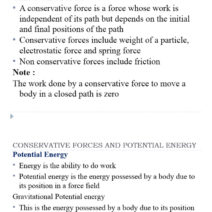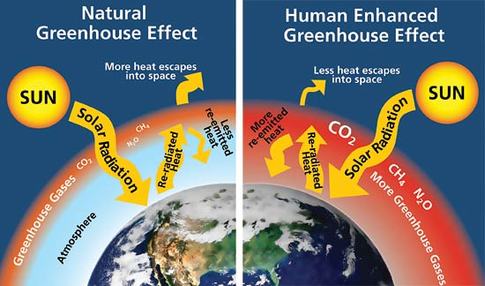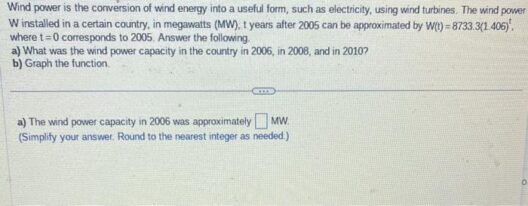The greenhouse effect is often likened to a cosmic blanket, swaddling the Earth in warmth—a gentle embrace that is essential for life. Yet, in recent times, this very phenomenon has come under intense scrutiny. Is the greenhouse effect inherently beneficial, or has humanity’s meddling transformed it into a malevolent force? To understand this delicate ecological tapestry, one must delve into the multifarious dimensions of the greenhouse effect, distinguishing between its natural and enhanced states.
Nature, in its infinite wisdom, has orchestrated a finely tuned balance. The natural greenhouse effect is an essential component of this equilibrium, facilitating the thermal regulation that sustains diverse ecosystems. Sunlight bathes the Earth, and a portion of this energy is absorbed and re-radiated as infrared radiation. Greenhouse gases—primarily water vapor, carbon dioxide, methane, and nitrous oxide—trap some of this heat in the atmosphere. Without this natural insulation, average global temperatures would plummet, rendering our planet inhospitable.
However, this symbiotic relationship can be disrupted. Let us traverse through the nuanced landscape of the greenhouse effect, exploring the intricate interplay between its natural and enhanced components.
A Glimpse into Natural Wonder: The Benefits of the Natural Greenhouse Effect
The natural greenhouse effect acts as a climate stabilizer, akin to how a natural thermostat regulates temperature within a home. By ensuring that some heat remains within the atmosphere, it prevents extreme temperature fluctuations that could jeopardize existence. In effect, this mechanism allows for the moderation of climate, which is crucial in sustaining the water cycle, agricultural productivity, and biodiversity.
In this pristine state, greenhouse gases perform their roles with finesse. For instance, water vapor accounts for the largest proportion of greenhouse gas emissions, naturally occurring in our atmosphere from various sources, including evaporation from oceans and transpiration from plants. This vapor is not only vital for keeping the planet warm but also plays a significant role in cloud formation and precipitation patterns, thereby influencing local climates.
Moreover, carbon dioxide and methane, although present in smaller quantities, also contribute positively when in equilibrium. They facilitate photosynthesis in plants, which in turn provide oxygen—a critical element for life. Thus, a well-balanced natural greenhouse effect encourages a thriving planet teeming with life forms, from the tiniest microbes to the largest mammals.
The Flip Side: Enhanced Greenhouse Effect and Its Harrowing Consequences
However, the rapid, unbridled combustion of fossil fuels during the industrial revolution marked a significant turning point, akin to a maestro losing control of the orchestra. The enhanced greenhouse effect emerged as human activity contributed to an irrefutable increase in greenhouse gas concentrations, particularly carbon dioxide and methane. This escalation is reminiscent of a runaway train; the momentum has far surpassed safety limits.
The consequences of this enhanced effect lead to global warming, climate instability, and an increase in extreme weather phenomena. Melting ice caps, rising sea levels, and erratic weather patterns serve as stark reminders of the imbalance we have created. Think of our planet as a finely tuned instrument—once perfectly harmonious—but now out of tune due to excessive emissions and pollution.
Climate Change: An Uninvited Guest at the Table
Climate change emerges as an insidious consequence of this enhanced greenhouse effect. The very alterations in the climate systems we relied on have begun to unravel. From droughts to deluges, the effects are ubiquitous and indiscriminate, impacting not only the environment but also human livelihoods, food security, and public health. Communities across the globe are grappling with the repercussions of rising temperatures, as traditional agricultural practices become untenable in the face of increasingly hostile conditions.
Seeking Balance: An Urgent Call for Sustainable Practices
The urgent need of the hour is to reclaim equilibrium. Sustainable practices, such as renewable energy adoption, energy efficiency, and carbon sequestration, are pivotal in mitigating the effects of emissions. Think of these practices as crucial repairs on our “atmospheric blanket.” By reducing reliance on fossil fuels, we can curtail the rising levels of greenhouse gases and restore the natural balance that has sustained life for millennia.
Moreover, reforestation and improved land management practices can enhance carbon sinks, drawing down carbon dioxide from the atmosphere and storing it within vegetation and soil. As stewards of our planet, harnessing nature-based solutions can bring solace to an increasingly disrupted climate system.
The Path Forward: Reimagining Our Relationship with the Earth
In reevaluating our economic and social systems, the dichotomy between the natural and enhanced greenhouse effects must be framed not as opposing forces, but rather as interconnected elements in the grand tapestry of Earth’s ecosystems. Only through a concerted effort can humanity transition from an exploitative relationship with nature to a symbiotic partnership aimed at sustainability.
In conclusion, the greenhouse effect is a double-edged sword—beneficial when natural yet perilous when enhanced. Striking this precarious balance will require profound changes in behavior, policy, and technology. As we move forward, embracing the nuanced beauty of the natural world could guide us back towards a future where the greenhouse effect once again acts as an ally, enabling life to flourish in harmony rather than an antagonist precipitating its demise.






